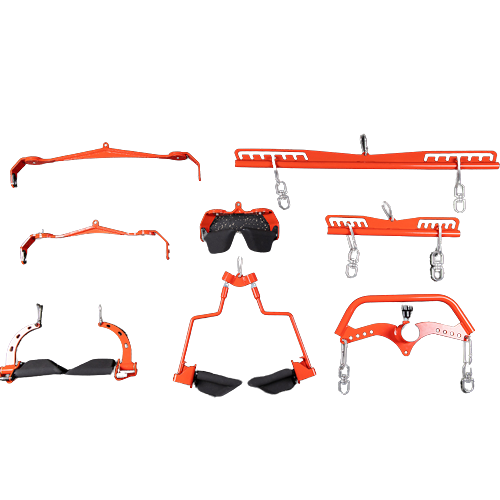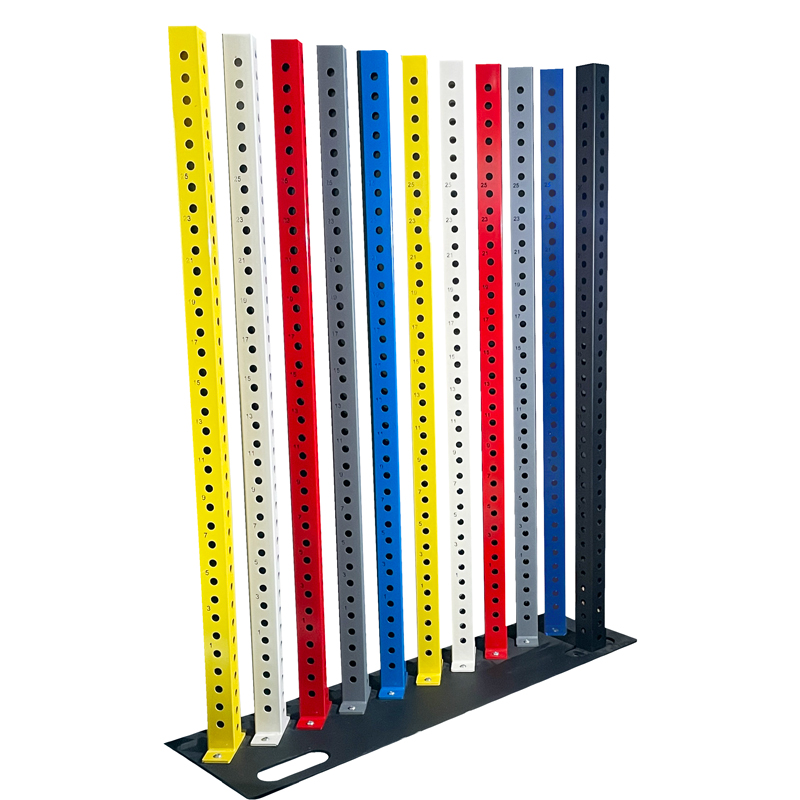How Customization in Gym Equipment Can Boost Your Brand

The fitness industry is booming. Recent reports show a significant surge in gym memberships and at-home fitness equipment sales, indicating a growing global focus on health and wellness. However, in this increasingly competitive landscape, simply offering standard gym equipment is no longer enough. To truly stand out and thrive, brands must embrace personalization. This blog post will explore how offering customized gym equipment significantly differentiates brands, enhances customer loyalty, and ultimately drives overall brand success. We'll delve into the various customization options available, the impact on brand identity and functionality, and the strategic advantages of investing in personalized fitness solutions.
Understanding Your Target Audience: The Foundation of Customization
Before diving into specific customization options, thorough market research is crucial. Identifying your niche audience is the foundation upon which successful customization strategies are built. Ignoring this step can lead to wasted resources and ineffective marketing.
Consider the diverse range of potential customers:
Elite Athletes: This demographic demands high-performance equipment with precise specifications, often requiring advanced customization options like adjustable weight stacks with micro-increments, specialized bar designs for specific lifts, and durable materials capable of withstanding intense training regimens.
Beginners: Beginners benefit from equipment with clear instructions, intuitive design, and potentially lower weight capacities. Customization might focus on user-friendly interfaces, ergonomic designs for comfort, and color schemes that are motivating and approachable.
Seniors: This group requires equipment that prioritizes safety, comfort, and ease of use. Customizations could include adjustable seat heights, lower weight resistance options, and features designed to reduce strain on joints.
Specific Sports Enthusiasts: Whether it's yoga, Pilates, or powerlifting, customizing equipment to meet the specific needs of a particular sport is key. This might involve specialized bars, unique resistance systems, or attachments tailored to the specific movements and techniques involved.
Understanding your audience’s needs—their fitness goals, preferences, physical limitations, and even aesthetic tastes—directly informs your customization choices. For instance, younger audiences might appreciate vibrant colors and modern designs, while a more mature demographic might prefer a classic and sophisticated aesthetic.
Customization Options: Beyond Just Colors
Customization isn't limited to simply changing the color of your equipment. It encompasses a wide spectrum of options, offering varying levels of personalization:

Basic Customization: This level focuses on branding and minor design tweaks. It includes strategically placing your logo, selecting brand colors for the frame or upholstery, and perhaps adding subtle design elements like etched patterns. This is a cost-effective way to add a personal touch without major design overhauls.
Intermediate Customization: This tier allows for more significant alterations. You can customize weight stacks to offer specific resistance increments, incorporate specialized attachments tailored to particular exercises, and select premium upholstery in various textures and colors to match your brand identity.
Advanced Customization: This represents the pinnacle of personalization. This level often involves a complete design overhaul, creating bespoke equipment to meet very specific training needs. This might include integrating fitness tracking technology, designing entirely new resistance systems, or creating unique functionality based on user feedback and biomechanical principles. This can lead to truly innovative products.
The Impact of Aesthetics: Brand Identity Through Design
Aesthetics play a pivotal role in reinforcing your brand identity. Consistent visual elements—from color palettes to material choices—create a recognizable and memorable brand experience. Strategic use of color psychology can significantly impact customer perception. Energizing reds can evoke feelings of excitement and motivation, while calming blues promote relaxation and serenity.
The quality of materials and finishes also matters. High-quality materials, such as durable steel, premium upholstery, and smooth powder-coating, project a sense of premium craftsmanship, enhancing your brand's perceived value. Using sustainable and eco-friendly materials further strengthens your brand's image.
Enhancing Functionality: Tailoring Equipment to Training Styles
Customizing equipment based on specific training methods is a powerful way to enhance customer satisfaction. Consider these examples:
Powerlifting: Specialized bars with thicker diameters and knurling optimized for grip, adjustable benches with reinforced structures, and heavy-duty weight plates are essential.
Yoga: Customization focuses on comfortable mats with enhanced grip, supportive blocks, and straps designed for various poses.
Improved functionality translates to increased customer satisfaction and loyalty. When equipment perfectly meets the needs of a specific training style, customers are more likely to endorse your brand and become repeat buyers.
The Value Proposition of Customization: Justifying the Investment
The initial investment in customized equipment may seem higher, but the return on investment (ROI) is substantial. The premium pricing associated with customized products significantly increases profit margins compared to generic equipment. Brand differentiation is a major advantage; customized equipment makes your brand stand out from competitors, attracting customers who value uniqueness and personalized experiences. Furthermore, improved customer satisfaction leads to enhanced brand loyalty and repeat business, significantly lowering customer acquisition costs. Successful brands like Leadman Fitness have demonstrated this; their focus on high-quality, customizable equipment has created a fiercely loyal customer base.
Building Brand Loyalty Through Personalized Experiences

Customized equipment fosters a sense of ownership and exclusivity. Customers feel a stronger connection to your brand when they own equipment tailored to their specific needs. Developing a compelling brand story around your customization process—emphasizing craftsmanship, attention to detail, and the use of premium materials—builds trust and strengthens the emotional connection between your brand and your customers. Consider creating social media campaigns showcasing customized products, featuring testimonials from satisfied customers, or hosting exclusive events for your loyal customer base.
Collaborations and Co-branding Opportunities
Partnering with fitness influencers or other brands opens up exciting co-branding opportunities. Collaborating with a respected fitness influencer allows you to tap into their established audience, significantly expanding your reach and introducing your brand to new customer segments. A successful co-branded product line can leverage the strengths of both brands, creating a synergistic effect. For example, a gym equipment manufacturer could collaborate with a popular fitness apparel brand to design a co-branded line of equipment with matching aesthetics and branding.
The Role of Technology in Customized Gym Equipment
Integrating smart technology into your equipment elevates your brand’s value proposition. Fitness tracking, data analysis, and personalized workout programs provide customers with valuable insights into their training progress. Smart features not only improve the functionality of your products but also provide a richer and more engaging user experience. This technological integration speaks to the brand's commitment to innovation and forward-thinking design. The future of fitness is likely to see an even greater fusion of technology and customized fitness solutions.
Conclusion: Customizing Your Way to Success
Customizing gym equipment provides significant advantages: enhanced brand differentiation, increased customer loyalty, and ultimately, higher profitability. Understanding your target audience and providing a unique value proposition are critical elements of a successful customization strategy. By investing in high-quality, functional, and aesthetically appealing customized equipment, you can establish a powerful brand identity, create a loyal customer base, and achieve long-term success in the competitive fitness industry. We encourage you to explore the customization options available and contact us today to discuss how we can help you build your brand through personalized fitness solutions.
Bonus Section: Customization Checklist for Brands
[1] Define your target audience and their specific needs.
[2] Determine your budget and desired level of customization.
[3] Research and select high-quality materials and manufacturers.
[4] Develop a consistent brand identity and visual language.
[5] Design functional and aesthetically pleasing equipment.
[6] Develop a clear marketing and communication strategy.
[7] Establish a system for managing customer orders and customizations.
[8] Implement quality control measures to ensure customer satisfaction.
[9] Gather customer feedback to continuously improve your products.
This checklist can guide you through the process of customizing your gym equipment effectively. Remember that a tailored approach maximizes the impact on your brand's success.





